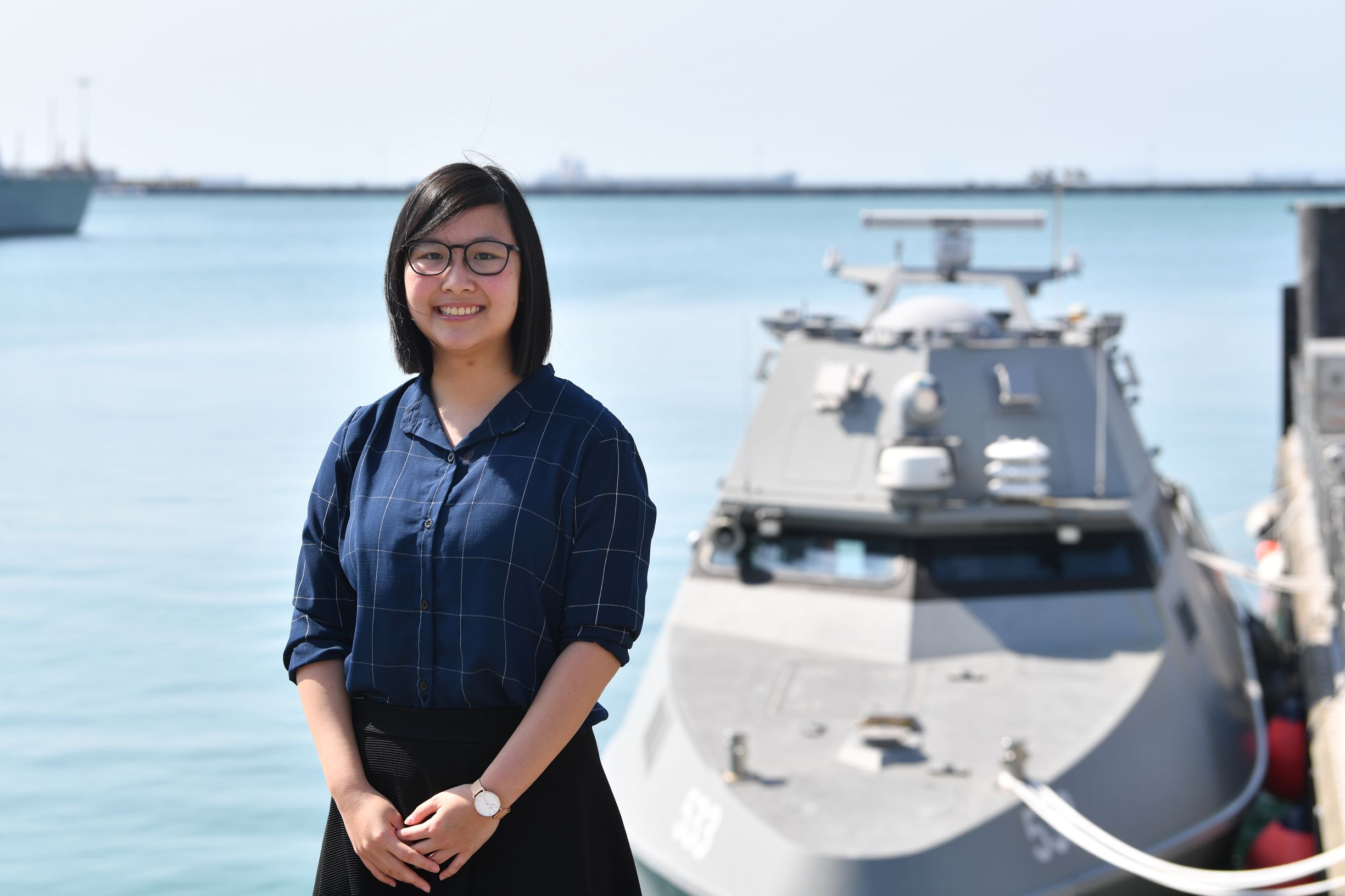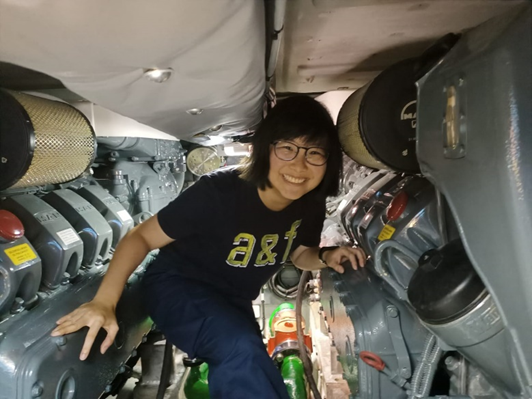10 Mar 2021
At the Singapore Science and Engineering Fair (SSEF), Senior Engineer (Naval Systems) Tan Shu Jun shared insights into the applications of 4th Industrial Revolution (IR) technologies to defence, as well as her journey with DSTA as a defence engineer.

Speaking virtually to more than 150 secondary and pre-tertiary students, teachers and parents on 10 March 2021, Shu Jun emphasised that with Singapore’s manpower constraints, it is important to leverage 4th IR technologies for the SAF to achieve a multiplier effect. She also shared her engineering journey and experiences with DSTA where she tapped emerging technologies like data science and artificial intelligence for the Singapore Navy’s Maritime Security (MARSEC) Unmanned Surface Vessel (USV) programme.
We chatted with Shu Jun to find out what drives her to pursue her passion in defence engineering.
How was your experience sharing at the SSEF?
It was a fulfilling and rewarding experience being able to share aspects of my work with students, parents and teachers. Due to the nature of our work, it is not every day that defence engineers like myself get to talk about our work. I hope that I have sparked their interest in defence engineering by giving them a glimpse into how DSTA constantly leverages emerging technologies to meet the SAF’s unique requirements.

Any interesting questions from the students?
One of the questions raised during the Q&A was whether we are considering newer and greener technologies such as solar or fuel cells to replace existing systems onboard the USV. This was interesting because we have started exploring how we can modify our ship designs upfront – to include diesel-electric hybrid propulsion systems, for example – to reduce our environmental footprint. However, based on current technologies, going green usually comes with some trade-offs in terms of performance or cost, which we are assessing.
How did you get into defence technology?
I took part in Research@YDSP when I was 17, and that experience sparked my interest in defence science and technology. It gave me the opportunity to find out more about the unique challenges faced by the SAF, and how I could apply math and science concepts learnt in school to solve real-world problems. Being able to contribute to the defence and security of our nation also makes the work very meaningful for me.
What do you like about working in DSTA?
I enjoy working at DSTA because of the multidisciplinary nature of our work, as well as our collaborative culture where everyone is willing to help and provide advice or guidance when required.

I also like that DSTA has a strong focus on building staff competency. Personally, I’ve been given multiple opportunities to grow and hone my technical skills via secondment and external courses, especially in emerging technology such as data science and advanced robotics.
What are some challenges working with 4th IR technologies? How have you and your team overcome them?
We face unique challenges in applying 4th IR technologies to our work in defence. For the MARSEC USV programme, we assessed that there were no commercially available USVs that could operate autonomously in the congested Singapore Strait where more than 1,000 ships navigate daily. Hence, we embarked on local research and development to design and build our own USV which was customised for our unique operating environment. Given the lack of global standards and guidelines for such complex autonomous systems, we also developed a comprehensive verification and validation framework for the USV, which includes conducting rigorous safety and technical assessment of the system design, as well as validation through simulation, inspection and eventually sea trials.
While we also planned to leverage data science for predictive maintenance, which would help reduce maintenance costs and increase system availability, we had a lack of failure data to train our predictive models with. Therefore, we implemented anomaly detection models, which are semi-supervised algorithms that can be trained with just normal data to recognise and reconstruct patterns of the system within its operational boundaries. By doing so, the model would be able to predict failures if it detects any anomalies outside of the system’s normal operating conditions.
Is there anything you would like to share with students interested in pursuing defence technology as a career?
Besides anchoring your fundamentals in Mathematics and Science, it is important to discover your interests, be it in Infocomm Technology, Cybersecurity or Engineering. You should also always be curious about how things work, and how you can apply technical concepts to solve real-world problems. Pursuing defence technology as a career will definitely be very meaningful and rewarding, as you will be able to work in multidisciplinary teams to deliver innovative and impactful solutions to improve Singapore’s defence and security.
